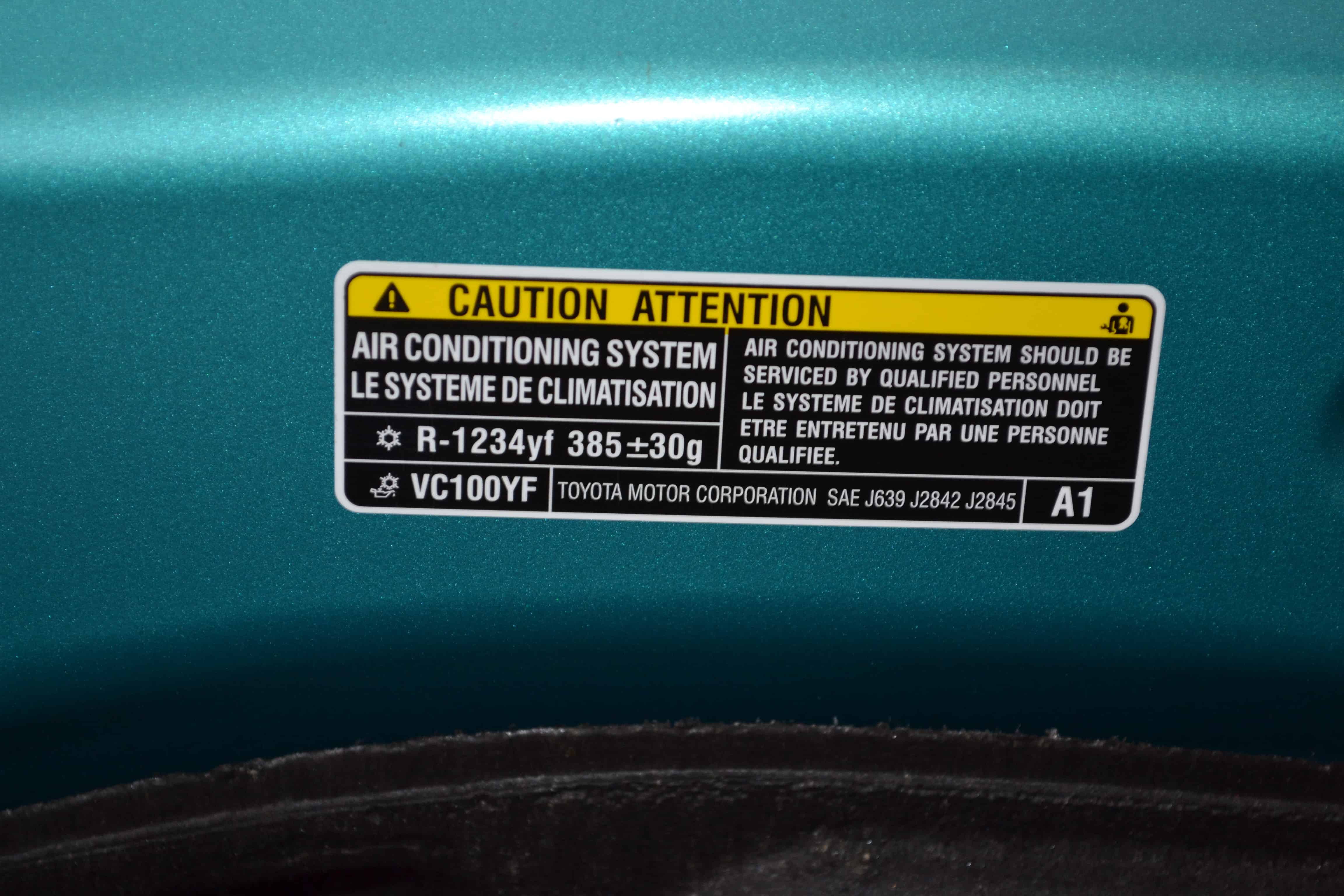Seeking yf
By Steve Schaeber, MACS Manager of Service Training
MACS has been tracking refrigerant use by vehicle manufacturers for quite some time and, as expected for the 2018 model year, we have seen a few more manufacturers choose to change over a few or even all of their US offerings to use the new refrigerant HFO-1234yf.
January 26 was Media Day at the 2018 Philadelphia Auto Show, and MACS was there to check out 28 brands, open 239 hoods, and discover what the OEMs are doing with their A/C systems. We were not surprised to see more vehicles using the new refrigerant, but we really didn’t expect to learn that a few decided to change over all of them in just one model year! In the end, we calculated that similar to last year, about 48 percent of the new models are using yf.
Several car makers that previously had zero vehicles with R-1234yf for 2017 have now joined the ranks, with the biggest surprises coming from BMW and Mini. Each of the 11 BMW models we inspected were charged with the gas, along with the seven Mini Cooper variants. We expected a few, but certainly not all of them! In fact, BMW, Jaguar, Land Rover and Mini were the only car lines that didn’t use R-134a in anything (JLR changed over all of their product lines for the 2016 model year).
Still, there are a shrinking number who continue to use R-134a exclusively, including Acura, Infinity, Mazda, Nissan and Volvo. We didn’t expect to see yf in any of the new Nissans or Infinities, but were surprised that Acura didn’t even have one, considering that seven of the nine Hondas have already been changed over. Mazda showed six models with 134a (Mazda 3, 6, CX-3, CX-5, CX-9 and MX-5 Miata), while none of the six Volvos (S60, S90, T8, V90 and XC60) use yf.
VW made a big jump compared to last year when they only had the Atlas prototype. Now it is using R-1234yf in the production model Atlas along with Beetle, Golf, Passat and Tiguan. Note that Tiguans built in Mexico are using yf, while the Tiguan Limited imported from Germany still uses R-134a. VW’s cousin Audi is going a little slower, using the refrigerant in both a passenger car (the A4) and a crossover SUV (the Q5) before making a larger commitment. A smart move that some other OEs have also made.
Most of the GMs have already switched, including all of the Cadillacs as reported last year. GMC has the most at 83 percent followed by Chevy at 65 percent and Buick at 50 percent. FCA continues to lead the pack, with all but one model using yf (the 2018 Fiat 124 Spider Abarth).
Others, which we’ll continue to keep an eye on as the year progresses, have come in either at or below 50 percent. After all, the 2019 model year is only a few short months away, and Ram has already introduced its 2019 Ram 1500 pickup to much fanfare, as evidenced by the well-attended media event the manufacturer held in Philadelphia.
This chart compares the percentage of models being filled with either R-134a or R-1234yf refrigerant, listed by manufacturer. (Credit: Steve Schaeber)
| OEM | Total # of Models | R-134a % | R-1234yf % |
| Acura | 5 | 100.00% | 0.00% |
| Audi | 9 | 77.70% | 22.20% |
| BMW | 11 | 0.00% | 100.00% |
| Buick | 8 | 50.00% | 50.00% |
| Chevrolet | 17 | 35.29% | 64.70% |
| FCA | 8 | 12.50% | 87.50% |
| Ford | 14 | 57.14% | 42.89% |
| Genesis | 3 | 33.33% | 66.66% |
| GMC | 6 | 16.66% | 83.33% |
| Honda | 9 | 22.22% | 77.77% |
| Hyundai | 8 | 75.00% | 25.00% |
| Infinity | 6 | 100.00% | 0.00% |
| JLR | 7 | 0.00% | 100.00% |
| Kia | 10 | 30.00% | 70.00% |
| Lexus | 9 | 88.88% | 11.11% |
| Lincoln | 5 | 60.00% | 40.00% |
| Mazda | 6 | 100.00% | 0.00% |
| Mini | 2 | 0.00% | 100.00% |
| Mitsubishi | 4 | 50.00% | 50.00% |
| Nissan | 12 | 100.00% | 0.00% |
| Ram | 2 | 50.00% | 50.00% |
| Subaru | 7 | 71.42% | 28.57% |
| Toyota | 14 | 71.42% | 28.57% |
| Volvo | 6 | 100.00% | 0.00% |
| VW | 7 | 28.57% | 71.42% |

